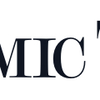Business News

The Economic Times: Breaking news, views, reviews, cricket from across India
Updated: 8 hours 34 min ago
Ola Electric stores see raids, seizures
Ola Electric Mobility's rapid expansion into brick-and-mortar showrooms is running into regulatory trouble. The Bengaluru-based electric scooter maker, once a champion of the digital-only sales model, recently scaled up to 4,000 physical locations since 2022. A Bloomberg News investigation has found that out of roughly 3,400 showrooms for which data is available, a little over 100 locations had trade certificates required under India’s Motor Vehicles Act.That means more than 95% of the stores on which Bloomberg News saw the data, lacked basic certification needed to display, sell, offer test rides on or transport unregistered two-wheelers.In response to customer complaints, transport authorities across Indian states have conducted raids, closed showrooms, seized vehicles and sent show-cause notices querying the Bhavish Aggarwal-led firm, according to internal documents and government warning letters seen by Bloomberg News.The country’s Motor Vehicles Act mandates that every auto showroom, including two-wheelers, should have a trade certificate conspicuously displayed if it keeps unregistered vehicles, according to Hans Kumar, a retired assistant transport commissioner who worked in the western Indian state of Rajasthan.At least six local transport officials in interviews with Bloomberg News said they were probing Ola for alleged violations, reflecting the dark underbelly of Ola’s aggressive expansion. “Your ‘investigation’ findings that there is non-compliance are misplaced and prejudiced,” an Ola spokesperson said in an emailed response. Ola maintains an inventory of unregistered vehicles at its distribution centres and warehouses across Indian states “which are fully compliant with the guidelines of the Motor Vehicles Act, and have the necessary approvals,” he added.Ola’s response did not directly answer whether their public-facing stores had trade certificates or if the firm had seen the raids, seizures by local transport regulators.Battling crisesThe startup, once India’s biggest scooter maker, is now battling crises on multiple fronts. Shares have plunged over 60% from its peak since listing in August. It has also faced buyer complaints on quality and service issues, social media backlash and widening losses in recent months. Aggarwal said in an October post on X that Ola was expanding its network to address customer complaints.The regulatory challenges come as the company lays off over a thousand employees and contract workers, Bloomberg News reported this month, where Ola acknowledged that some roles were getting redundant as it recast and automated a part of its operations. It’s also racing to roll out its e-motorcycles, which are delayed since Aggarwal had indicated a January launch at an event last year. Ola spokesperson did not answer a query on the delayed motorcycle launch.According to nearly two dozen notices sent by state-level transport officials and seen by Bloomberg News, transport officials across India have stepped up scrutiny and often found Ola falling short of the trade certificate requirement at the store level.Ola sporadically applied and obtained trade certificates in some locations in response to transport department’s notices or raids, according to documents seen by Bloomberg News. The first warning to Ola about these violations dates back to at least 2023, with the most recent coming in early March. Transport officials in multiple states confirmed ongoing investigations into Ola’s showroom operations.In the midst of all the regulatory action, Ola announced a store launch blitz in December adding overnight more than 3,200 new locations. Most of these new stores don’t have the necessary trade certificates, according to documents seen by Bloomberg News. The emailed response from Ola did not comment on the transport officials’ probes or the lack of certification in these newer stores.Ola told transport authorities since at least late 2023 that its experience centers are merely for “customer engagement” and not direct sales, according to documents seen by Bloomberg News, but regulatory probes have continued across states.Ola told exchanges on Feb. 19 that it was re-negotiating terms with two of its agencies engaged in vehicle registration in government regional transport offices. This would impact February’s vehicle registration numbers in the government database, it added.Red flagThe scooter maker, in a Feb. 28 exchange filing, said it had sold “over 25,000 vehicles” last month while a government portal VAHAN shows that just over 8,600 were registered. This massive gap is potentially a red flag since customers cannot receive unregistered vehicles in India.Indian automakers typically only count registered vehicles in their sales. Not registering all the invoiced vehicles even a week after Ola announced its sales number to exchanges — local rules give it up to a seven-day window — risks putting it at odds with state government laws. “The registration figures for February 2025 sales will be updated on the VAHAN portal in the next few weeks,” Ola spokesperson said in the email, adding that this delay was already flagged in an exchange filing last month.The widespread store-level non-compliance comes on the back of rising pressure to boost scooter sales and plummeting share price. Ola has also lost market share — and its top spot in the two-wheeler market — as legacy manufacturers Bajaj Auto Ltd. and TVS Motor Co. gain ground, according to data compiled by the government’s VAHAN database.Despite its mounting challenges, Ola’s Aggarwal said the firm will post a turnaround soon.“We can expect auto segment Ebitda breakeven at about 50,000 monthly sales,” Aggarwal told analysts in a Feb. 7 earnings call. “We do feel in the next few quarters, we can get to about 50,000.”
Categories: Business News
Why should America worry about Trump?
Categories: Business News
Samsung India workers call off strike
Categories: Business News
BCCI appoints Shukla and Shelar to ACCB
Categories: Business News
Can Trump buy Greenland?
Categories: Business News

